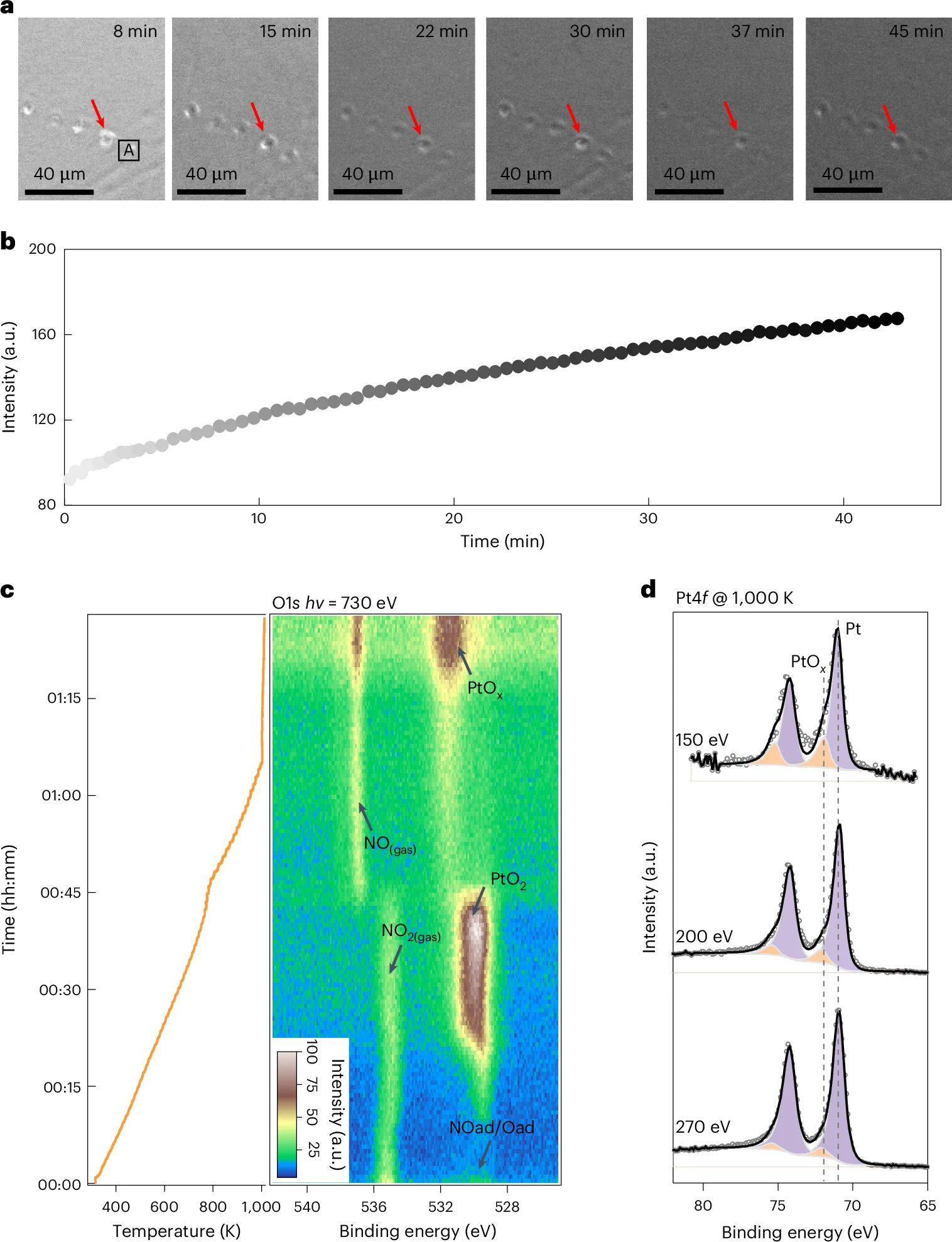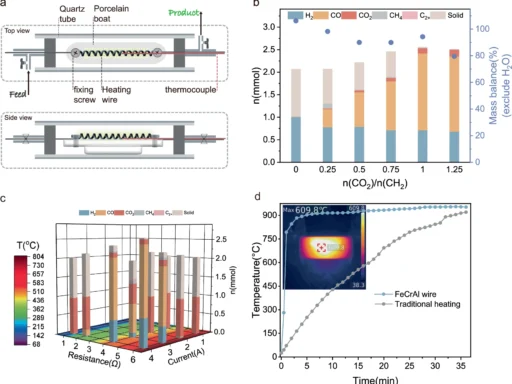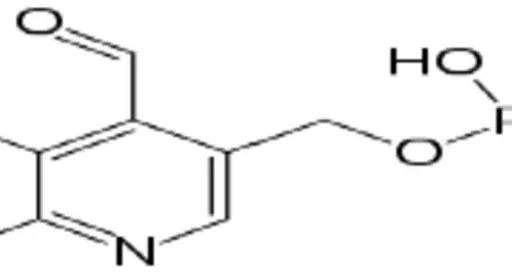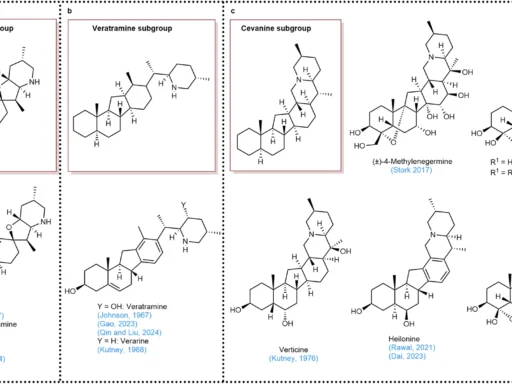Table of Contents
Overview of two-dimensional materials:
In recent years, two-dimensional (2D) materials have attracted significant attention owing to their distinctive features and disruptive potential across different industries. These materials, including a monolayer of atoms, often measure only a few nanometres in thickness yet exhibit remarkable electrical, optical, and mechanical characteristics. Graphene exemplifies the transformative potential of 2D materials in advancing electronics, energy storage, and sensing technologies. A new contender has emerged—two-dimensional crystalline platinum oxide (2D PtO), which holds the potential to expand the limits of nanotechnology.
What is Two-Dimensional Crystalline Platinum Oxide?
Two-dimensional crystalline platinum oxide is an innovative material that has garnered the interest of researchers due to its unique features and prospective applications. Platinum oxide, historically recognised for its catalytic properties and chemical durability, acquires distinct attributes when transformed into a two-dimensional crystalline structure. This structure has platinum atoms arranged in a lattice with oxygen atoms. This makes a thin, flexible material that combines the good conductivity and catalytic properties of platinum with the advantages of a flat shape.
The allure of Two-Dimensional Crystalline Platinum Oxide lies in its metallic characteristics and ability to interact with light and other substances in ways unattainable by bulk platinum oxide. This creates several uses, particularly in sectors such as electronics, energy storage, and environmental technologies. Formation of PtOx layer on Pt(111) under NO2.
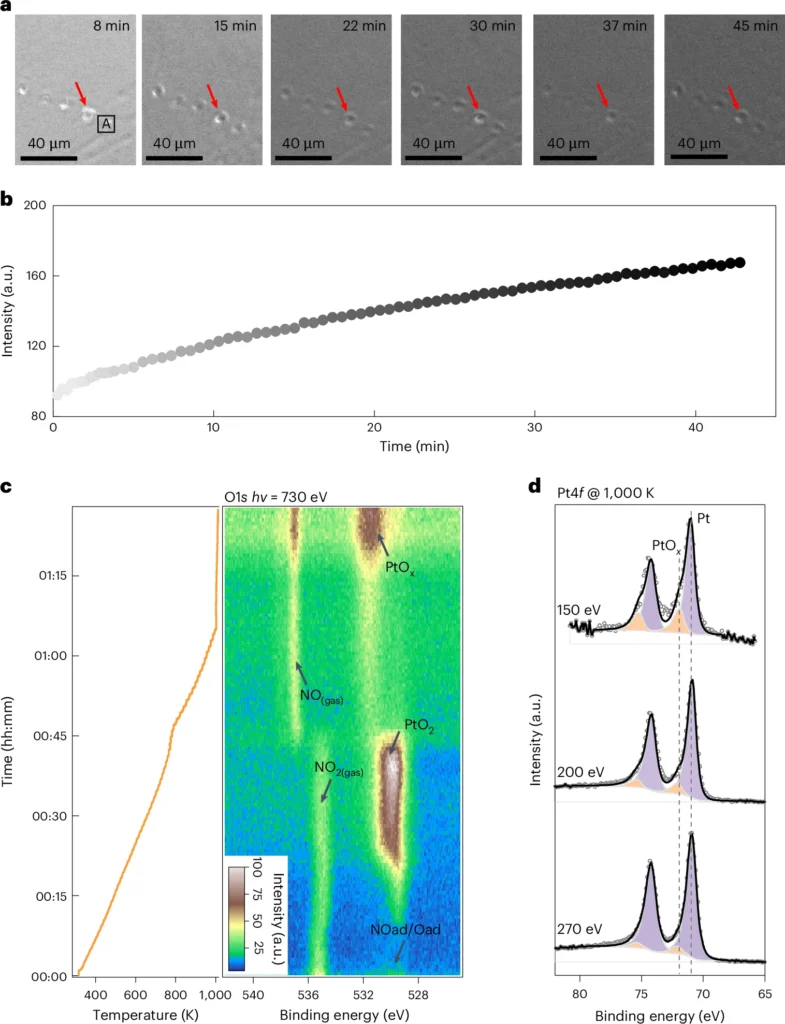
Formation and Synthesis of Two-Dimensional Crystalline Platinum Oxide:
Fabricating Two-Dimensional Crystalline Platinum Oxide necessitates accuracy and sophisticated methodologies. Chemical vapour deposition (CVD) is the most commonly used synthesis process for Two-Dimensional Crystalline Platinum Oxide. This technique enables the precise deposition of platinum oxide onto substrates in ultra-thin layers, making it ideal for forming a crystalline two-dimensional structure.
Mechanical exfoliation is a technique that removes tiny layers of platinum oxide from a bulk material. Plasma-enhanced chemical vapour deposition (PECVD) is an advanced technology that provides precise control over layer thickness and crystallinity, essential for applications requiring extremely homogeneous materials.
Atomic Configuration of Two-Dimensional Crystalline Platinum Oxide:
At the atomic level, platinum atoms bound to oxygen atoms form a regular crystalline lattice in two-dimensional platinum oxide. This configuration facilitates robust, reliable connections that impart both rigidity and flexibility to the material. The oxygen atoms are critical for stabilising the structure and influencing its electrical and catalytic characteristics.
Atomic bonding confines to a plane in a two-dimensional configuration, thereby altering electron behavior in contrast to bulk materials. The change in electron dynamics contributes to the exceptional electrical and catalytic capabilities of 2D platinum oxide. The H2 etching process of a PtOx layer.
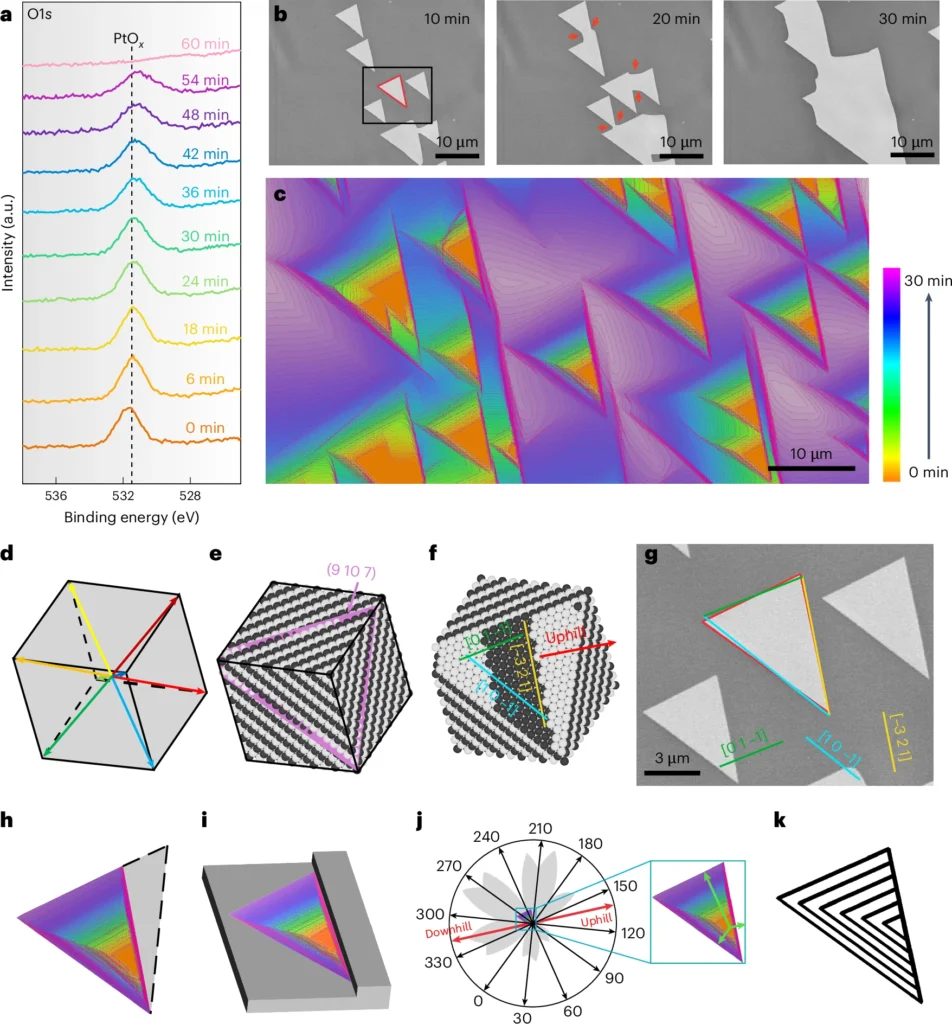
Electronic Characteristics of Two-Dimensional Crystalline Platinum Oxide:
Two-dimensional platinum oxide’s electrical characteristics are among its most attractive aspects. Although bulk platinum oxide is an effective conductor, the two-dimensional crystalline variant provides enhanced precision in conductivity regulation. Depending on its configuration, 2D PtO may have semiconducting properties, rendering it a potential contender for transistors and other electronic devices.
For specific purposes, one can tailor the material’s bandgap—the energy difference between its highest occupied and lowest unoccupied electron states—to enhance performance in electrical devices.
Optical Characteristics of Two-Dimensional Platinum Oxide:
Besides its electrical characteristics, 2D platinum oxide displays notable visual qualities. Its interaction with light renders it suitable for application in optoelectronic devices, which depend on the interplay between light and electronics. This encompasses photodetectors, solar cells, and potentially next-generation display technology. Characterization of the PtOx layer.
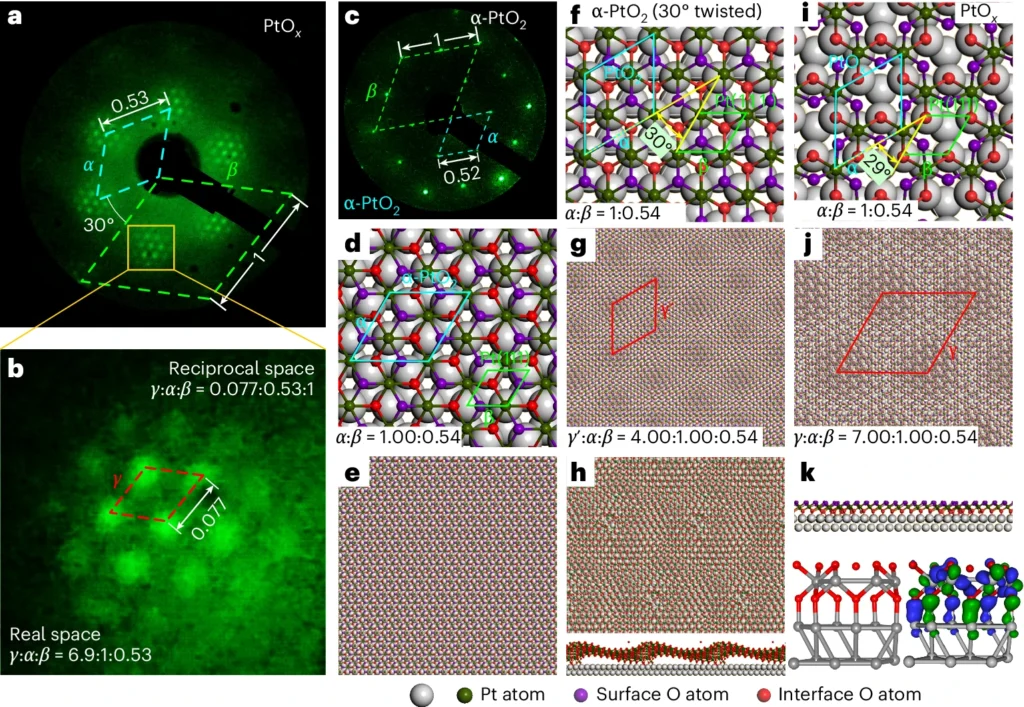
Mechanical Characteristics:
Notwithstanding its slenderness, 2D platinum oxide has remarkable strength. Its mechanical qualities render it sufficiently durable for application in flexible electronics, where materials must endure bending and stretching. While graphene is renowned for its strength, 2D platinum oxide offers a comparable level of flexibility, delivering unique electrical and catalytic advantages.
Chemical characteristics and stability:
The chemical characteristics of a material are essential for assessing its reactivity in various situations. Two-dimensional platinum oxide exhibits exceptional stability, even at elevated temperatures, and demonstrates resistance to oxidation and deterioration. As a result, it is a formidable contender for high-temperature applications and settings requiring chemical stability, such as catalysis.
Utilisations of Two-Dimensional Platinum Oxide:
The distinctive amalgamation of electrical, optical, mechanical, and chemical properties renders 2D platinum oxide an exceptionally useful material. Notable applications with significant potential encompass:
Catalysis: Utilizing platinum’s catalytic properties in a two-dimensional form may result in more efficient catalysts for chemical reactions, including those used in fuel cells.
Energy storage: Two-dimensional platinum oxide can contribute to energy conversion and storage systems, including batteries and supercapacitors.
Electronics: As a semiconductor, it is applicable to transistors, sensors, and other electronic components.
Two-dimensional platinum oxide in electronics:
The use of 2D platinum oxide in electronics represents one of its most promising opportunities. The semiconducting qualities may facilitate the creation of swifter, more efficient transistors, which constitute the fundamental components of contemporary electronics. Moreover, its adaptability renders it a compelling option for wearable devices and flexible displays. Real-space image of the PtO3–Pt structure.

Two-dimensional platinum oxide in environmental applications:
In environmental science, 2D platinum oxide may enhance air filtration systems or facilitate the development of more efficient water purification methods. Its elevated reactivity with pollutants makes it an exceptional material for catalytic converters in pollution control apparatuses.
2D Platinum Oxide for Medical and Biological Applications:
Two-dimensional platinum oxide has potential applications in medical and biological fields.
In the medical domain, 2D platinum oxide may be used in biosensors to detect specific molecules, such as glucose in diabetes care, or in drug delivery systems where its stable yet reactive properties facilitate the targeted release of medication.
The advancement of 2D Platinum Oxide faces several obstacles:
Despite its potential, there are problems with the development of 2D platinum oxide for extensive applications. The optimisation of existing synthesis techniques for large-scale output remains a challenge in mass production. Moreover, we must resolve critical difficulties such as guaranteeing long-term stability and addressing the expense of platinum before the material achieves commercial viability. Evolution process from Pt to PtO3–Pt.
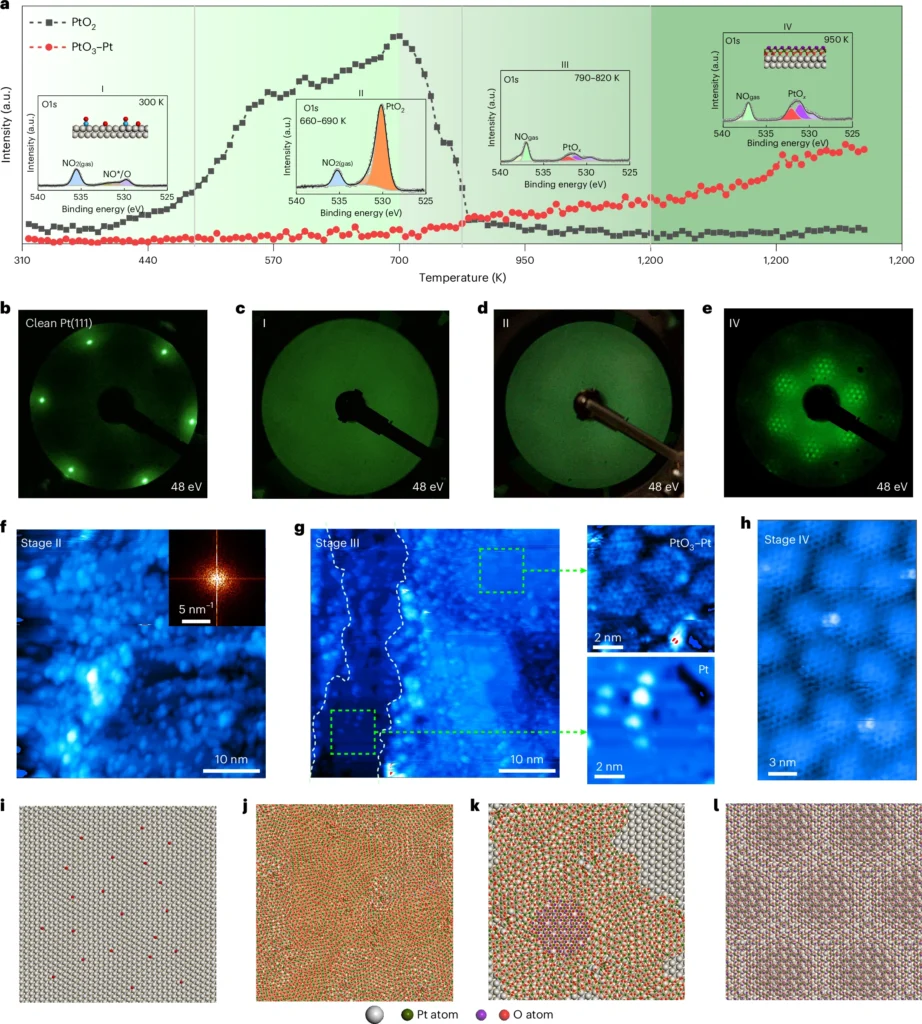
Prospects of Two-Dimensional Platinum Oxide:
The prospects for 2D platinum oxide are promising, as research continues to enhance its characteristics and identify novel uses. Hybrid systems that integrate 2D platinum oxide with other 2D materials, such as graphene, may yield more inventive solutions.
Final Assessment:
Two-dimensional crystalline platinum oxide is a remarkable material at the forefront of nanotechnology. Its distinctive features render it a formidable option for applications in catalysis, electronics, energy storage, and environmental sectors. Despite existing limitations, further research is expected to fully realize the potential of this adaptable material in the near future.
Frequently Asked Questions:
1). What distinguishes two-dimensional platinum oxide?
Its amalgamation of electrical conductivity, catalytic properties, and stability in a two-dimensional configuration distinguishes it from other materials.
2). In what ways does 2D platinum oxide differ from conventional materials?
In two-dimensional form, platinum oxide has superior electrical and mechanical properties, rendering it suitable for sophisticated electronics and flexible devices.
3). What are the primary applications of 2D crystalline platinum oxide?
It finds use in catalysis, energy storage, flexible electronics, and potentially in medical applications.
4). How does the atomic structure of two-dimensional platinum oxide affect its properties?
The two-dimensional crystalline structure of atoms facilitates enhanced regulation of conductivity, flexibility, and chemical stability.
5). Is 2D platinum oxide commercially feasible?
Currently, it is not available, but current research into production methodologies and cost minimization may facilitate its imminent commercialization.
For more chemistry blogs, visit chemistry Master


